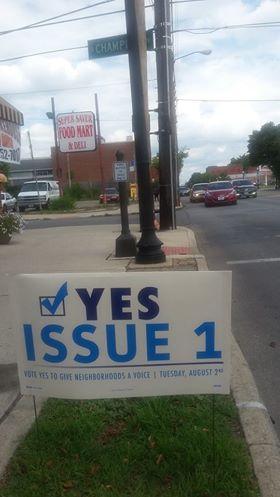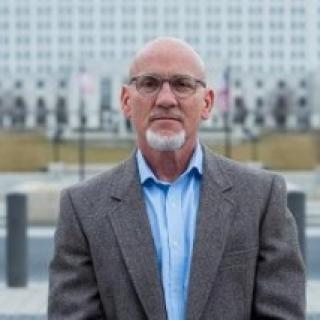Jonathan Beard is the energy and inspiration behind Issue 1, the vote to end the at-large city council which has been in-place for over a century. Beard is the president and CEO of the Columbus Compact Corporation. He’s co-chair of Represent Columbus, the grass-roots group behind Issue 1. In his own words Issue 1 is the “citizen-initiated proposed Columbus Charter Amendment to change our city council to a form that better represents the interests of the people of all Columbus.” A summer of violence in a long-neglected east side neighborhood, he says, is when and where Issue 1 was born.
I personally became involved to initiate Issue 1 when Columbus City Council would not act to support 22 neighborhood groups – two area commissions, plus umpteen civic associations, business associations and block watches – during a summer of horrific drug-related gun violence on E. Main Street where all the violence was caught on video and shared with city council.
We collectively sought to pre-empt the violence created by the open air drug markets by giving Columbus police an additional tool to cut off the sources of support for the open air drug market.
We asked city council to revise the city’s “loitering in aid of drug offenses law.” At that time, our police officers had been told to stop enforcing the law because it was unconstitutional. In 2011, I told WBNS-10tv, “What we’re trying to do is really shut down the open air drug markets, not just here but across the city.”
While every other group and public agency stepped up to the task, our city council did nothing. In fact, then-council president Andy Ginther ridiculed our efforts in the press.
For a year city council told neighborhood groups the city could not enforce the law. Finally the city acted, but only after we captured on video a horrific murder at the corner of E. Main and Champion Avenue.
Because we persevered over five years, there are three new privately funded retail establishments near this corner, including an Advance Auto parts store now being built. In addition, we have reclaimed a formerly vacant city block from S. 22nd St. to Ohio Avenue with new residents who enjoy being here instead of being terrified by the gun play.
We need a council that pays attention to the legitimate expressed needs of every neighborhood. Right now a handful of people determine where the city will invest its time and resources. The direction of city council and the decisions it makes is based on what major campaign contributors want.
The effects from this influence are being felt by neighborhoods in North Linden and South Side. Neighborhoods starved for money and redevelopment attention. We had another unanimous city council vote for a tax abatement to a billion-dollar business (Big Lots), where we abated taxes for the company to take 1,100 jobs from the west side to northeast Columbus.
City Council also voted to allow a public purchase of Nationwide Arena after the people voted no, diverting more than $4 million in public funds each year to subsidize a corporation with more than $24 billion in annual sales and over $1.6 billion in annual profits.
Furthermore, there is the whole issue of the city’s lack of support for neighborhood-based community development corporations, which puts neighborhoods in a childlike dependency on the benevolence of city government for improvements and preservation.
A recent example is on the Near East Side. Residents have fought for seven years to retain the history of Poindexter Village – a site eligible for listing on the National Register of Historic Places. They were dealt another blow last week when the Columbus Metropolitan Housing Authority, along with its Ohio State and city government partnership called PACT, announced it was demolishing yet another of these historic buildings. The Near East Area Commission has submitted multiple plans to save the historic buildings and voted “no” three times to stop the demolitions.
Neighborhood leaders are burning out as they work for years on very real, manageable and doable things to improve their neighborhoods and make them ever-better places to live.
Having more locally-based district representatives who know and understand their neighborhood’s issues, and who have the time to advocate for their neighborhood’s issues and interests, will have a greater impact to further improve the city as a whole.





